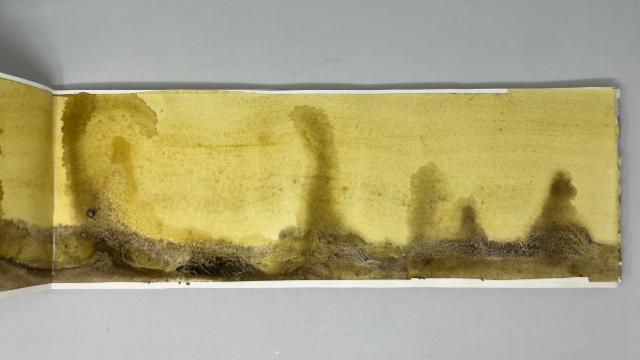
1/6
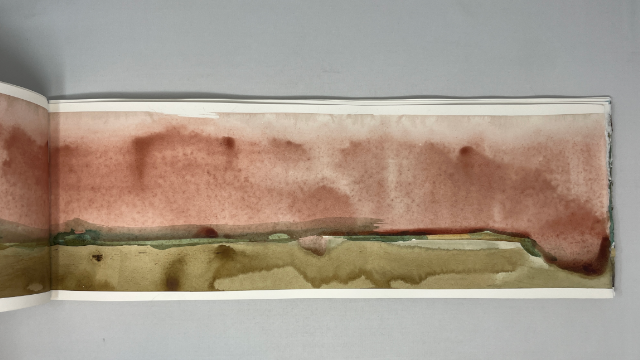
2/6

3/6
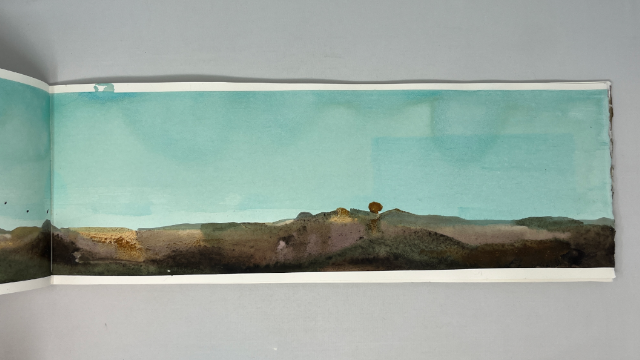
4/6
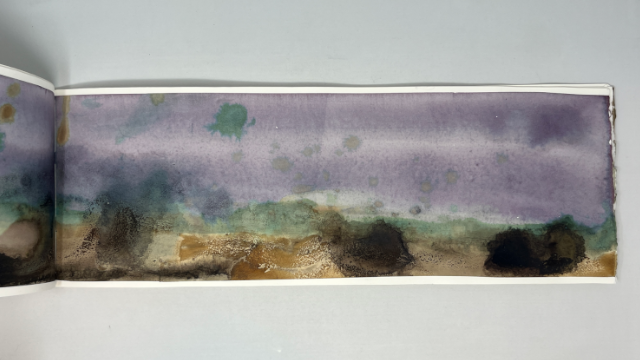
5/6
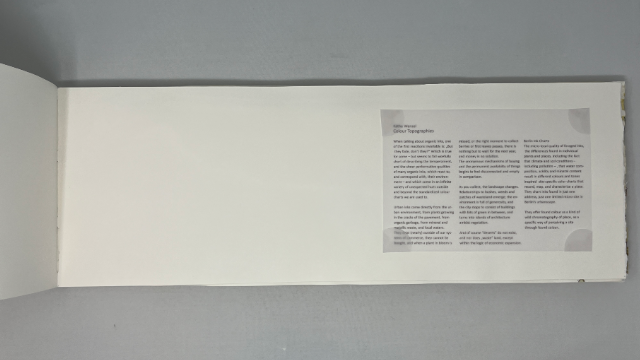
6/6
Wenzel, Käthe: Urban Ink Book I
When talking about organic inks, one of the first reactions invariably is:"But they fade, don't they?" Which is true for some – but seems to fall woefully short of describing the temperament, and the sheer performative qualities of many organic inks, which react to, and correspond with, their environment – and which come in an infinite variety of unexpectes hues outside and beyond the standardized colour charts we are used to.
Urban inks come directly from the urban environment , from plants growing in the cracks of the pavement, from organic garbage, from mineral and metallic waste, and local waters. They exist (nearly) outside of our systems of commerce, they cannot be bought, and when a plant in bloom is missed, or the right moment to collect berries or the first leaves passes, there is nothing but to wait for the next year, and money is no solution.The anonymous mechanisms of buying and the permanent availability of things begins to feel disconnected and empty in comparison.
As you collect, the landscape changes.Relationships to bushes, weeds and patches of wasteland emerge; the environment is full of generosity, and the city stops to consist of buildings with bits of green in between, and turns into islands of architecture amidts vegetation.
And of course "deserts" do not exist, and nor does "waste" land, except within the logic of economic expansion.
Berlin Ink Charts
The micro-local quality of forged inks, the differences found in individual plants and places, including the fact that climate and soil conditions – including pollution – , that water composition, acidity and mineral content result in different colours and tones inspired site-specific color charts that record, map , and characterize a place. They chart inks found in just one limited micro-site in Berlin's urbanscape.
They offer found colour as a kind o wild chromatography of place, as aspecific way of perceiving a site through found colour. ger., en., organic inks, japanese stitched, 22p, 22.8 x 8.3 inch, Ed. of 3 Unikate, num., sign., Berlin, 2025 Request of availability back
Urban inks come directly from the urban environment , from plants growing in the cracks of the pavement, from organic garbage, from mineral and metallic waste, and local waters. They exist (nearly) outside of our systems of commerce, they cannot be bought, and when a plant in bloom is missed, or the right moment to collect berries or the first leaves passes, there is nothing but to wait for the next year, and money is no solution.The anonymous mechanisms of buying and the permanent availability of things begins to feel disconnected and empty in comparison.
As you collect, the landscape changes.Relationships to bushes, weeds and patches of wasteland emerge; the environment is full of generosity, and the city stops to consist of buildings with bits of green in between, and turns into islands of architecture amidts vegetation.
And of course "deserts" do not exist, and nor does "waste" land, except within the logic of economic expansion.
Berlin Ink Charts
The micro-local quality of forged inks, the differences found in individual plants and places, including the fact that climate and soil conditions – including pollution – , that water composition, acidity and mineral content result in different colours and tones inspired site-specific color charts that record, map , and characterize a place. They chart inks found in just one limited micro-site in Berlin's urbanscape.
They offer found colour as a kind o wild chromatography of place, as aspecific way of perceiving a site through found colour. ger., en., organic inks, japanese stitched, 22p, 22.8 x 8.3 inch, Ed. of 3 Unikate, num., sign., Berlin, 2025 Request of availability back